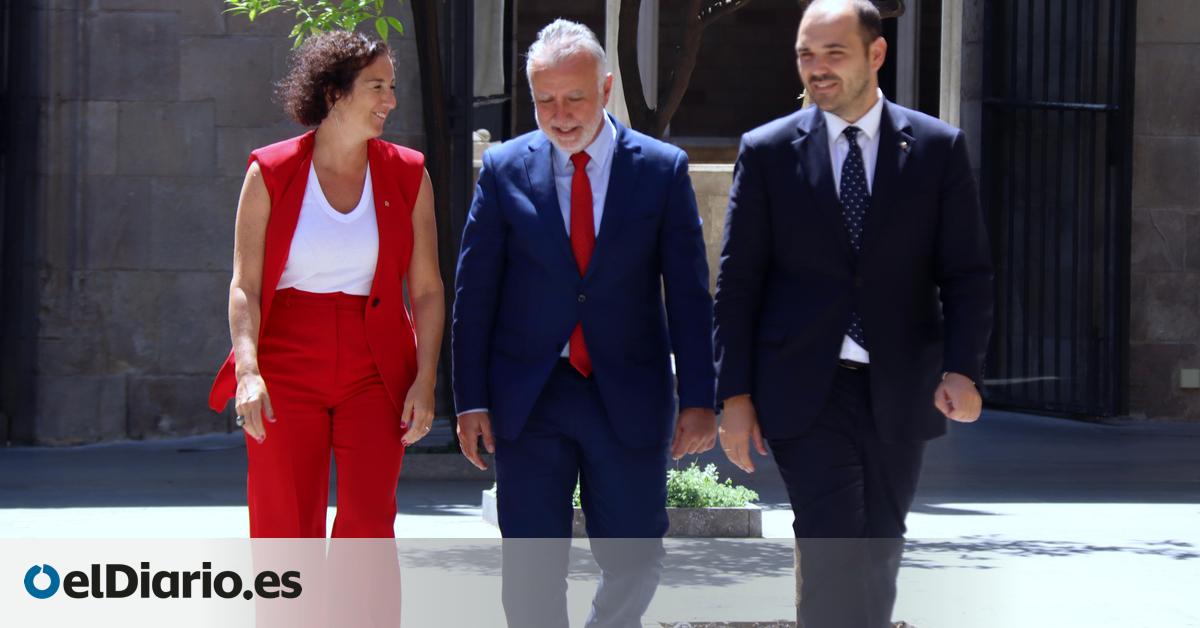
The Government and the Generalitat have sealed an agreement on Monday that supposes the departure pistol to a new financing model, not only for Catalonia but for the set of autonomies. The commitment implies that the Agència Tributària de Catalunya (ATC) can end up raising all taxes, which would mean a “paradigm change” regarding the current situation, as they consider in the Government. But this possibility is also offered to the rest of the communities that they wish, which is an asymmetric framework, since each one can decide their position to the measure of interest.
This project requires a complex legislative reform of at least one organic law, the Communities Financing Law (LOFCA), which will force the Government to have all the groups of most investiture. Therefore, the Government and the Generalitat have avoided marking fixed calendars for the deployment of this new system, which, however, they want, in regards to the collection, begin with a leap forward in the management of the IRPF by Catalunya in 2026.
The Minister of Territorial Policy, Ángel Victor Torres, and the Minister of the Presidency, Albert Dalmau, have been responsible for sealing this Monday what at the moment is an agreement on the bases of the model, that is, without technical concretion or much less numbers on the table.
It has been the minister himself who explained that the intention of the government is that the model, already concrete and with a small print, is presented “just around the summer” before the Fiscal and Financial Policy Council where the communities are represented.
Sources from both governments emphasize that it is an important recognition for Catalonia, to the extent that the Government accepts that the Agència Tributària collects all taxes, although at the moment this structure has no technical capacity to do so by itself, which is why it must continue to be deployed.
“This agreement feels the basis so that in the reform of the financing system the needs and singularity of Catalonia are taken into account just like the rest of the autonomous communities,” said Minister Torres, who has assured that it is an “update of the model according to the present time.”
On the part of the Government, Dalmau has thanked the high positions that have intervened in the agreement as ERC, with whom he has said they have been able to “weave a common interest space”. The Minister also stressed that the agreement is proof that “with collaboration we can get more things than with confrontation.”
The agreement involves taking steps in two directions. On the one hand, in the legislative reform that will allow Catalonia to begin to collect a part of its taxes from 2026, starting with the IRPF. On the other, a new financing system for all communities that the Ministry of Finance must finish profile, negotiate and present in the coming months, and that will also mean by the Congress another new law than to overcome the system agreed in 2009.
The bases on which the new model has been designed are several. On the one hand, the idea of a “generalizable singularity”, which according to the architects of the project allows to fit the demands of Catalonia in a common system, but that raises blisters in the opposition, but also in sectors of independence.
On the other hand, the idea of a solidarity limited by ordinality, according to which Catalonia will contribute to the system to level the income of all autonomies but will do it, at most, to the extent that it does not lose positions regarding its collection capacity.
The idea focuses that the communities that wish can raise their own taxes. The distribution will be set from the percentage of the State in a “tax basket”, which will mean that, at first, the Generalitat is necessary to finance its homogeneous powers – the ones that share with the rest of the communities – and will transfer the rest to the Treasury. From there, the State must in turn transfer the funds to pay the competences of the Generalitat, such as the Mossos d’Esquadra, prisons or everything related to the language.
“Either it is singular or is general,” said the spokesman of the Popular Party of Catalonia, Santi Rodríguez, who has warned that the pact could be contrary to the statute. Since the training they also demand that the system agrees with the rest of the autonomous communities.
Also among the critics of the pact is Junts, who in the mouth of his vice president Toni Castellà has lamented that the acorado this Monday cannot be detached that there is a new model “neither unique, nor plural.” Junts regrets the new financing proposal: “Neither singular nor plural, there is no new model.” “To the question of the 22,000 million the taxes of the Catalans who leave and do not return, how many will we recover with this agreement? For now, zero,” said Castellà.
On the part of Junts, their position in the proposal that ERC plans to modify three laws that allow the Generalitat to advance the collection has not advanced. “When there are papers we will value it”; The Juns leader has assured, who has given signs of the difficulty that any reform that needs the endorsement of such diverse groups will find.
More nuanced has been the reaction of ERC, training with which both the Government and the Treasury have worked. Although they have been informed of most given steps, those of Oriol Junqueras have marked distances from the agreement in the last hours, under the idea that they have not found enough concretion in the documents exchanged by both governments.
In ERC they are also worried about what they understand that it is a too slow deployment of the Agència Tributària of Catalonia. Junqueras himself has demanded that, although the collection must be carried out at first in collaboration with the Ministry of Finance, the “subordination” of the Catalan agency to the state is avoided. “There must be collaboration, but not subordination,” said the Republican leader.
Read the full agreement signed between the Government and the Generalitat:
Source: www.eldiario.es

